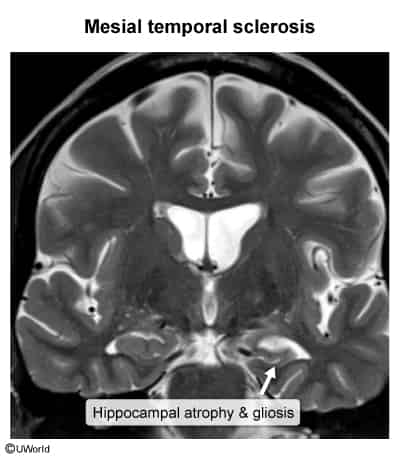- Epidemiology: most common form of epilepsy
- ∼ 40% of all epilepsy cases
- ∼ 70% of focal epilepsy cases
- Etiology
- Hippocampal sclerosis: found in approx. 70% of patients suffering from temporal lobe epilepsy that is resistant to pharmacotherapy
- Histopathology: atrophy of the hippocampal neurons with marked reactive gliosis (astrocyte proliferation in response to injury).

- Encephalitis (e.g., herpes simplex encephalitis)
- Developmental disorders
- Neurodegenerative disorders
- Tumors
- Clinical features: Seizures commonly occur in clusters, last approx. 30 seconds to 2 minutes, and follow a specific sequence.
- Aura
- Visceral, olfactory, or auditory
- Feelings of familiarity or unfamiliarity and “dreamy states”
- Focal seizure with impaired awareness (complex partial seizure)
- Motor symptoms
- Typically oral alimentary automatisms (e.g., lip-smacking)
- Autonomic symptoms
- Altered mental status
- Children appear absent-minded (e.g., staring ahead, unresponsive when spoken to)
- No loss of consciousness
- Postictal phase
- Confusion and tiredness (common)
